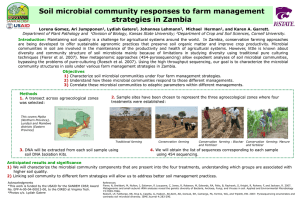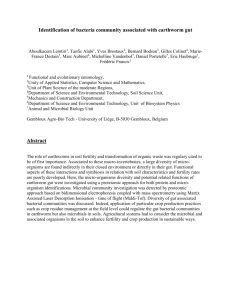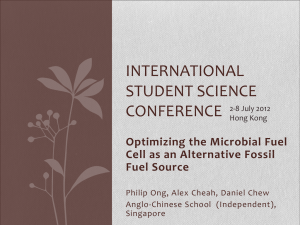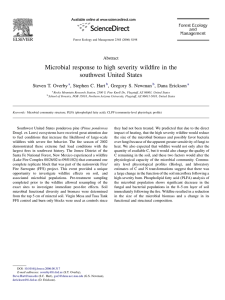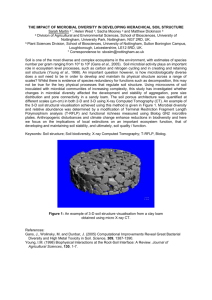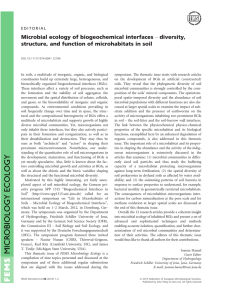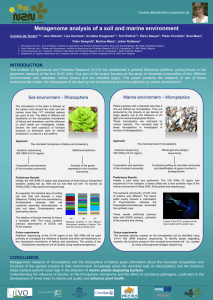use of molecular techniques to investigate microbial populations in
advertisement
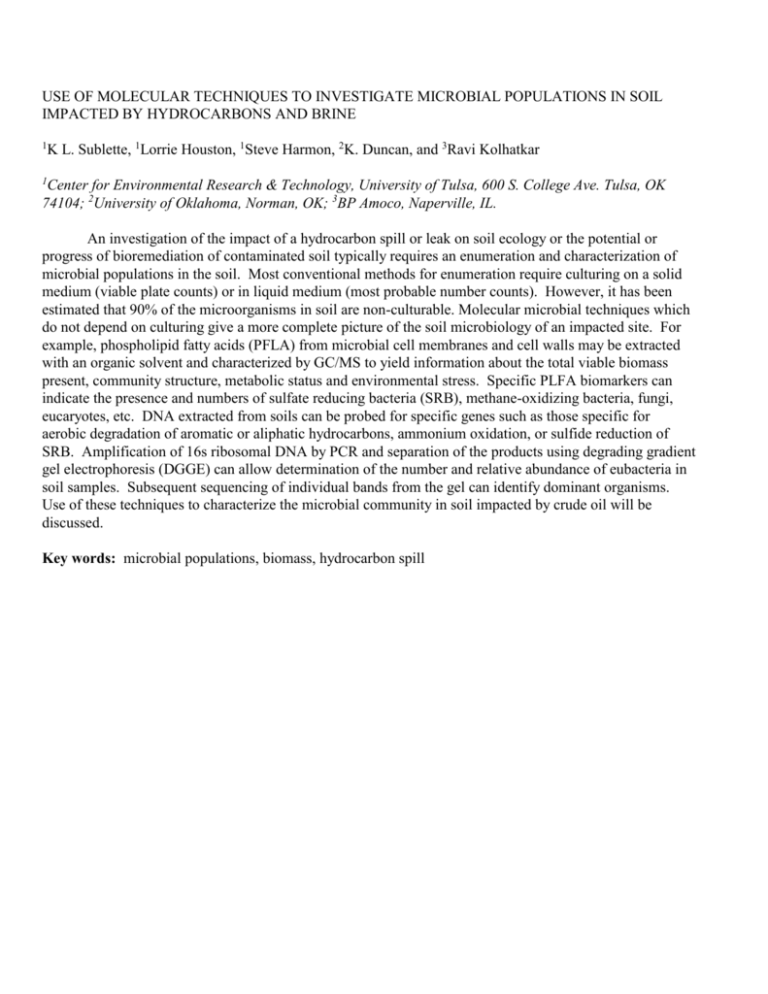
USE OF MOLECULAR TECHNIQUES TO INVESTIGATE MICROBIAL POPULATIONS IN SOIL IMPACTED BY HYDROCARBONS AND BRINE 1 K L. Sublette, 1Lorrie Houston, 1Steve Harmon, 2K. Duncan, and 3Ravi Kolhatkar 1 Center for Environmental Research & Technology, University of Tulsa, 600 S. College Ave. Tulsa, OK 74104; 2University of Oklahoma, Norman, OK; 3BP Amoco, Naperville, IL. An investigation of the impact of a hydrocarbon spill or leak on soil ecology or the potential or progress of bioremediation of contaminated soil typically requires an enumeration and characterization of microbial populations in the soil. Most conventional methods for enumeration require culturing on a solid medium (viable plate counts) or in liquid medium (most probable number counts). However, it has been estimated that 90% of the microorganisms in soil are non-culturable. Molecular microbial techniques which do not depend on culturing give a more complete picture of the soil microbiology of an impacted site. For example, phospholipid fatty acids (PFLA) from microbial cell membranes and cell walls may be extracted with an organic solvent and characterized by GC/MS to yield information about the total viable biomass present, community structure, metabolic status and environmental stress. Specific PLFA biomarkers can indicate the presence and numbers of sulfate reducing bacteria (SRB), methane-oxidizing bacteria, fungi, eucaryotes, etc. DNA extracted from soils can be probed for specific genes such as those specific for aerobic degradation of aromatic or aliphatic hydrocarbons, ammonium oxidation, or sulfide reduction of SRB. Amplification of 16s ribosomal DNA by PCR and separation of the products using degrading gradient gel electrophoresis (DGGE) can allow determination of the number and relative abundance of eubacteria in soil samples. Subsequent sequencing of individual bands from the gel can identify dominant organisms. Use of these techniques to characterize the microbial community in soil impacted by crude oil will be discussed. Key words: microbial populations, biomass, hydrocarbon spill


